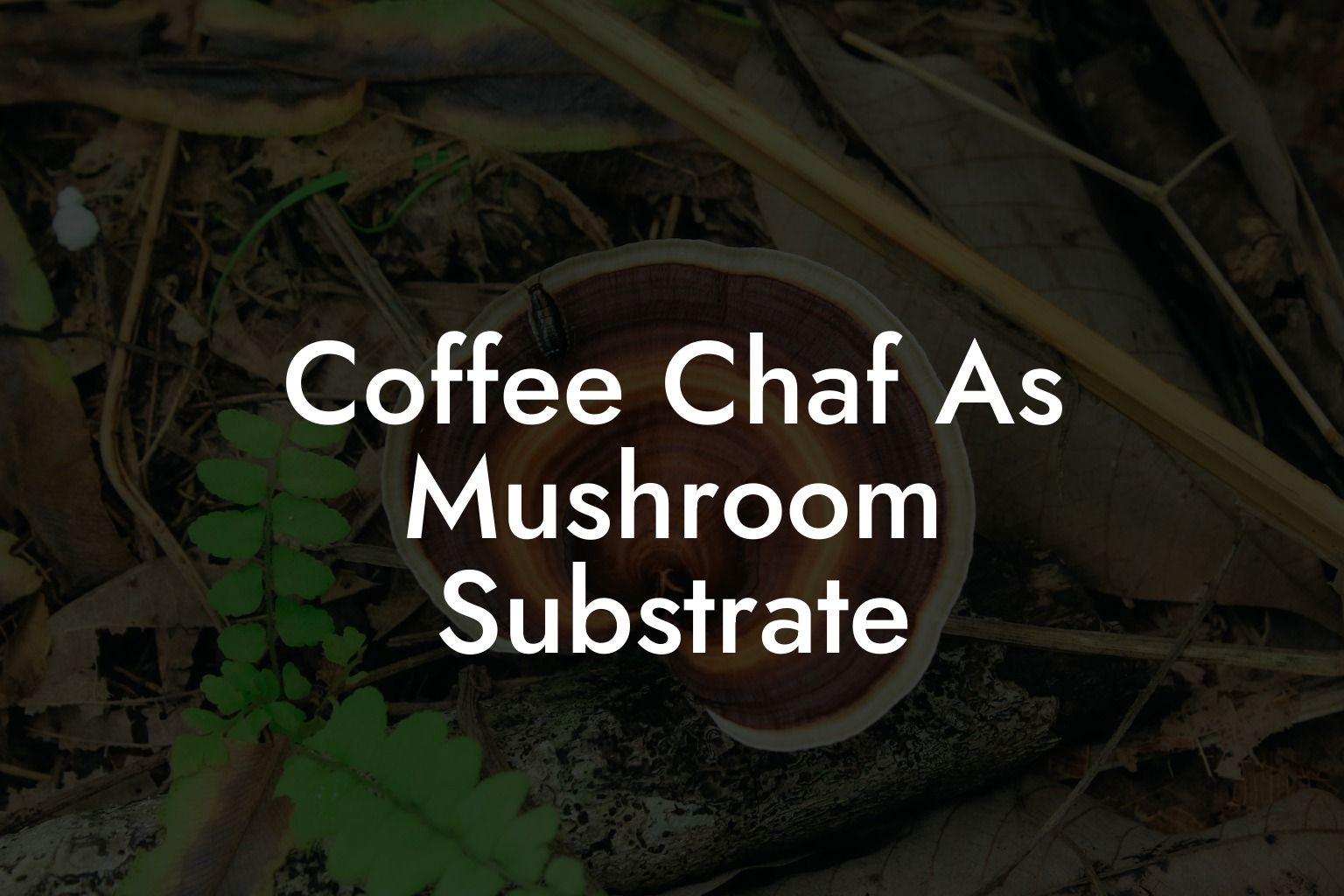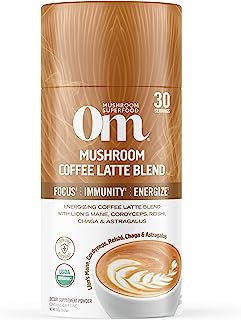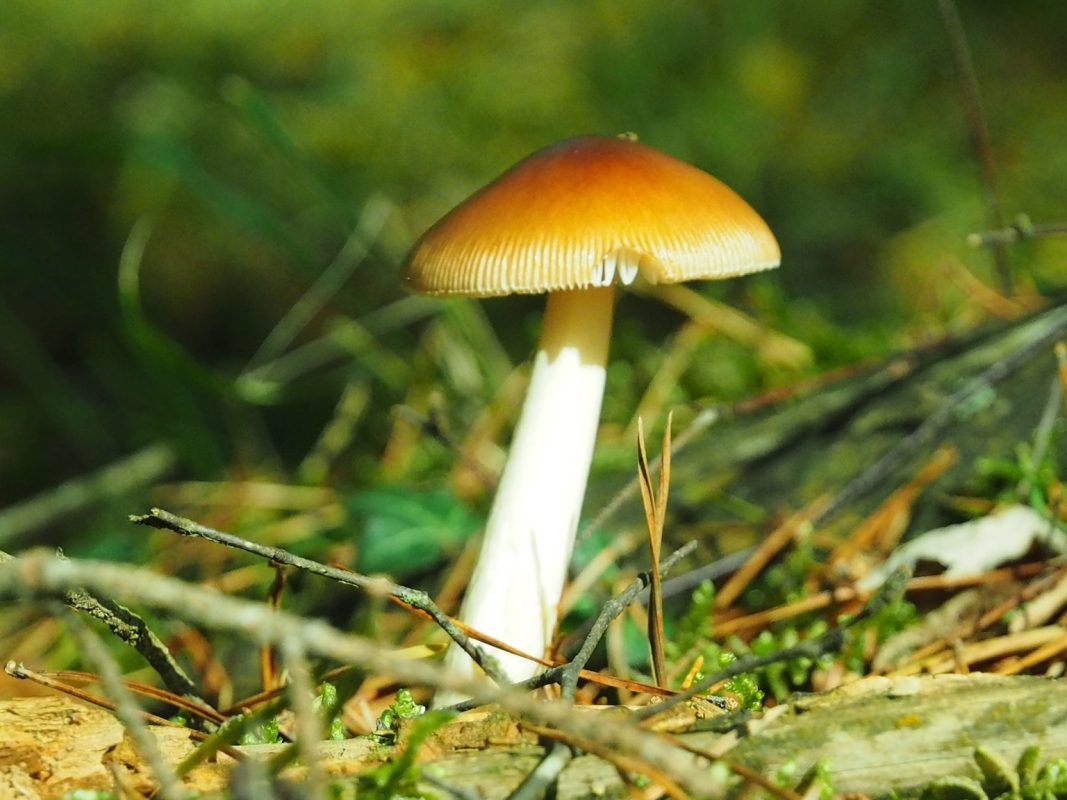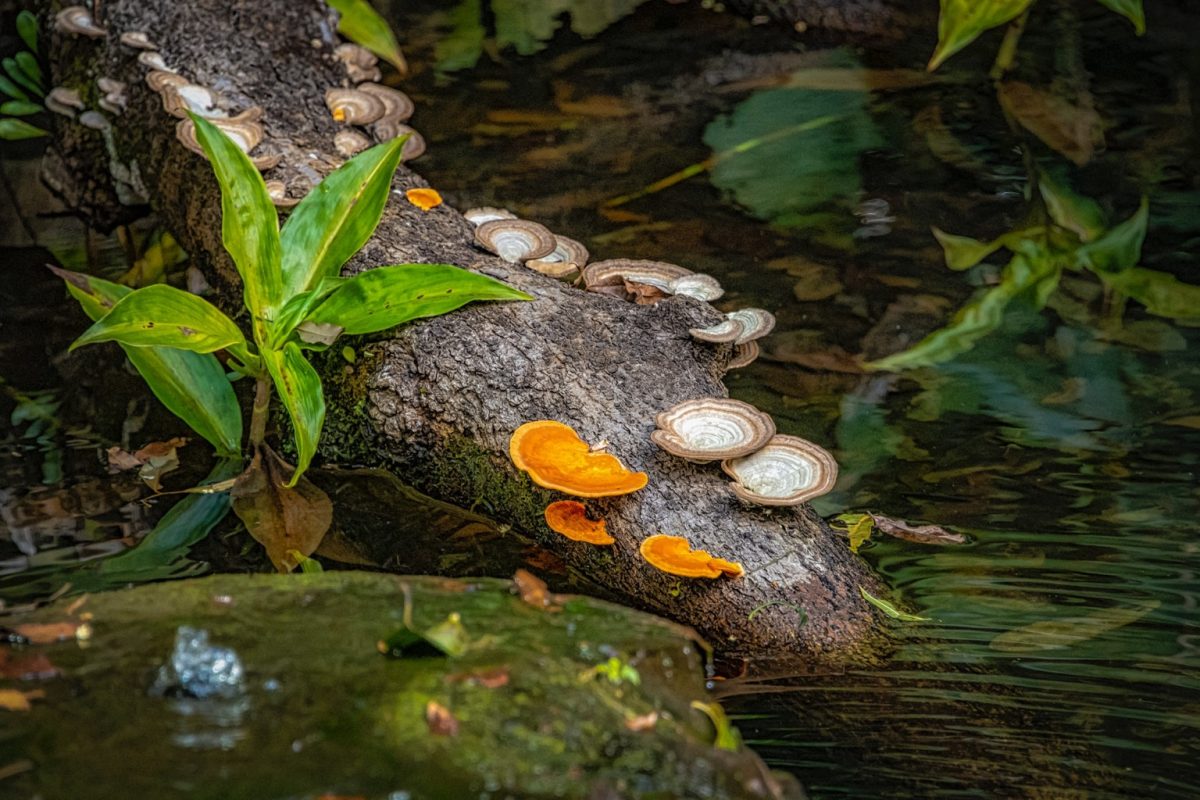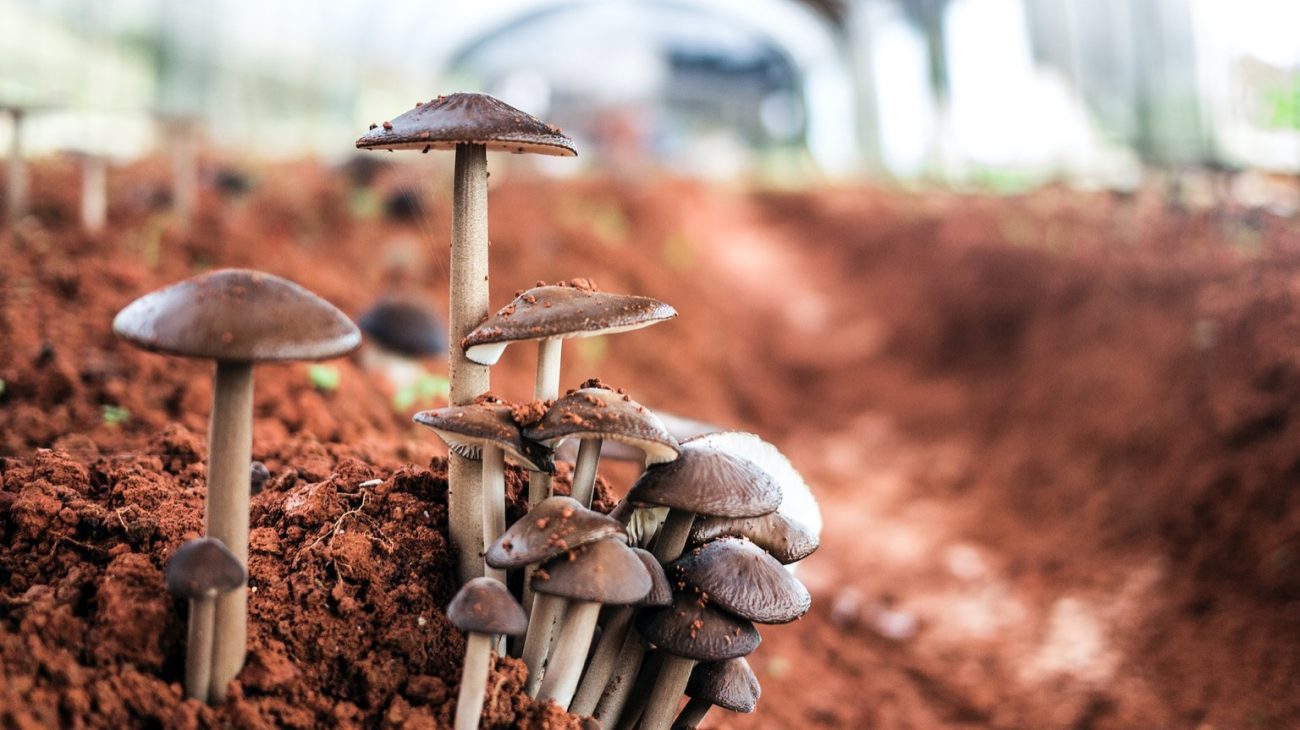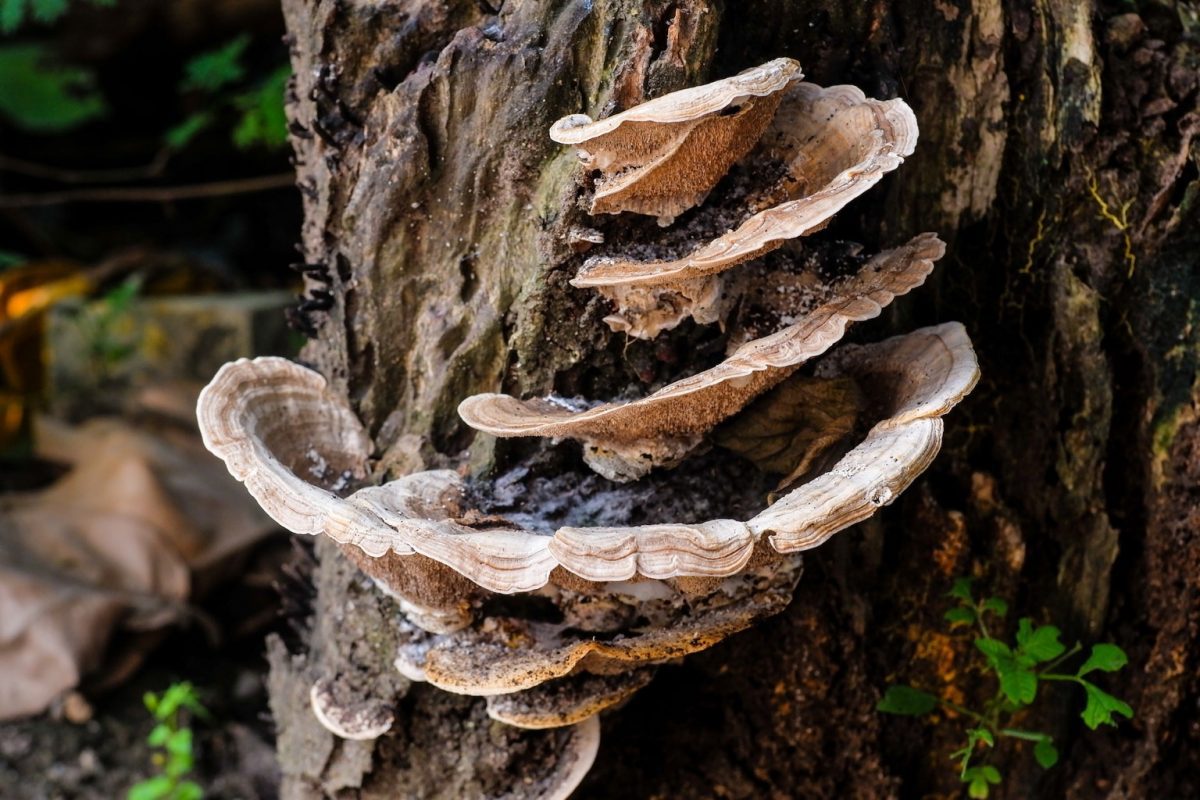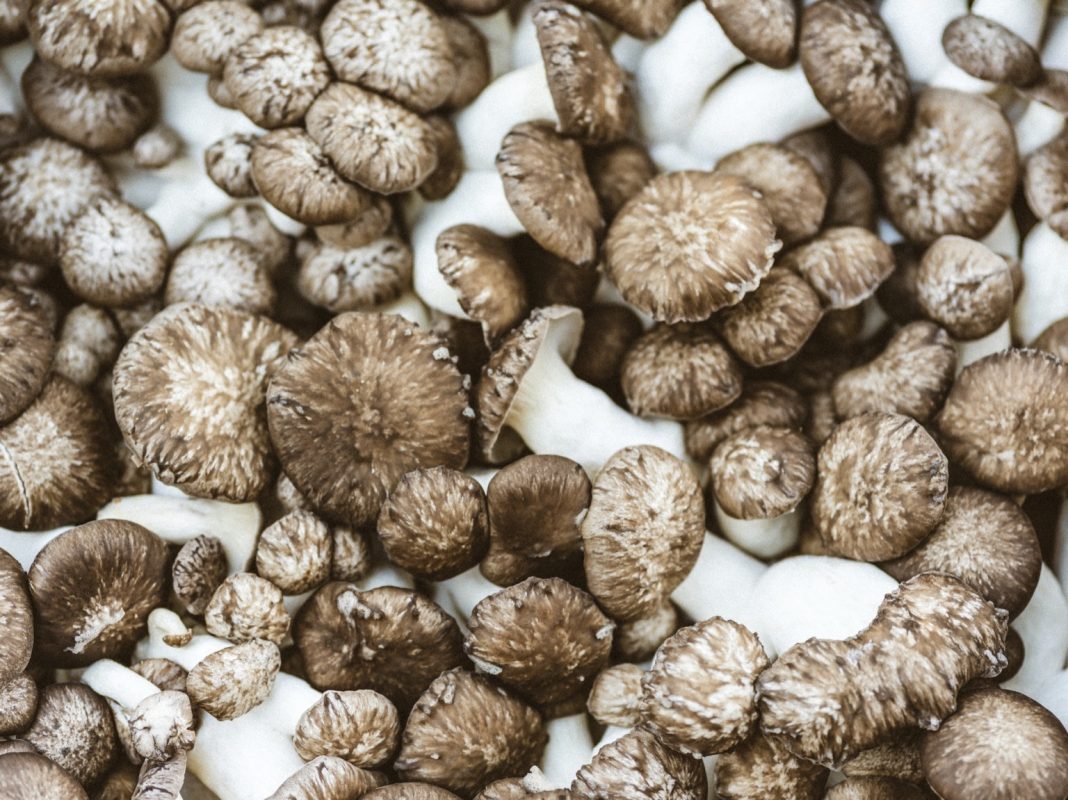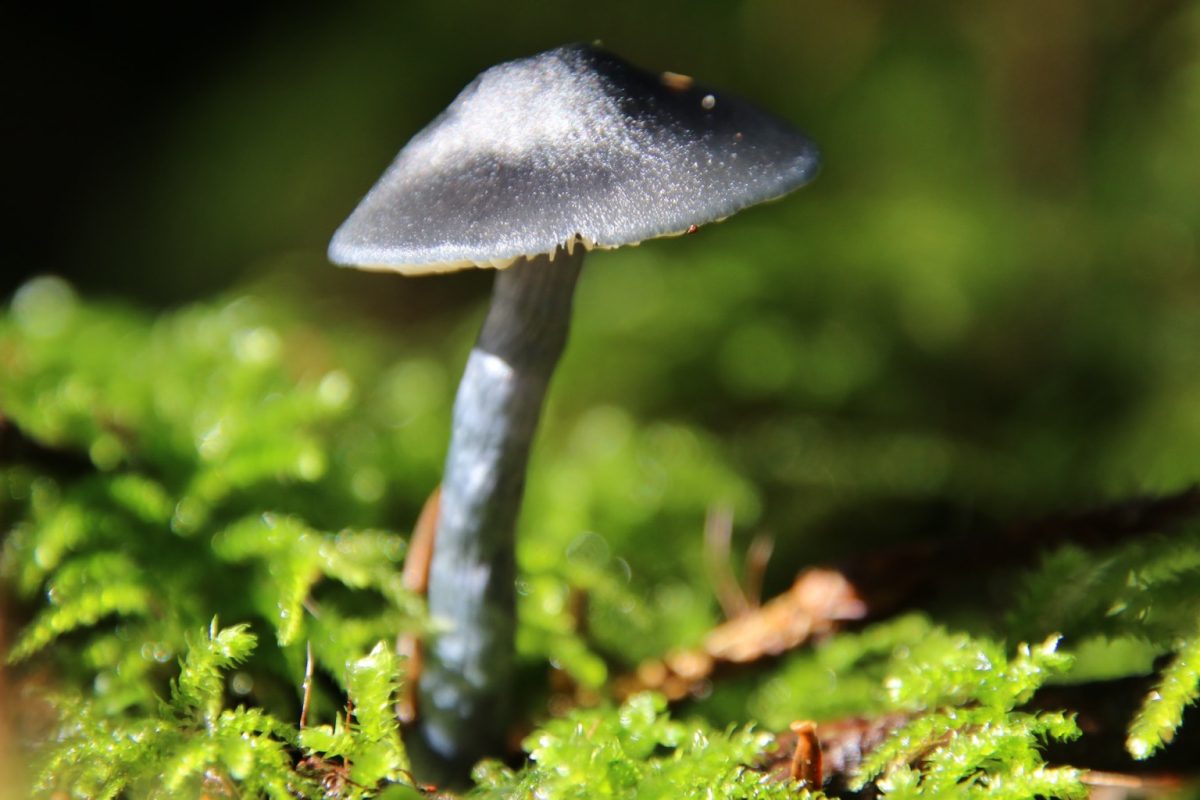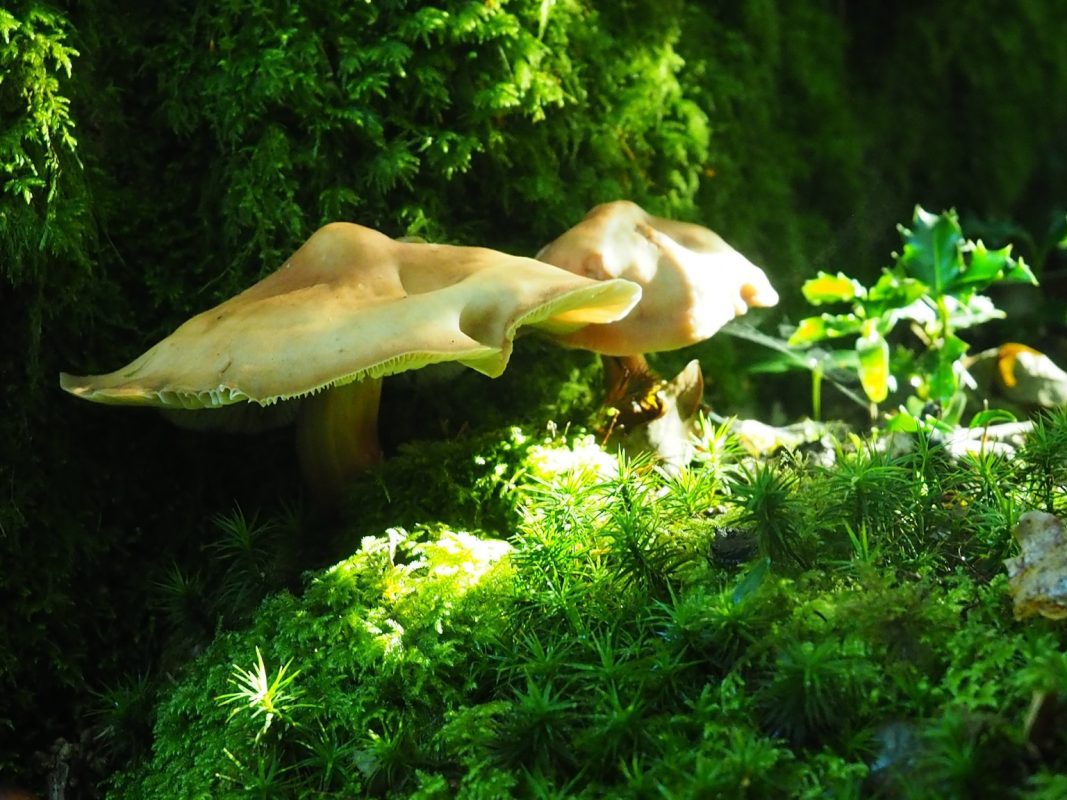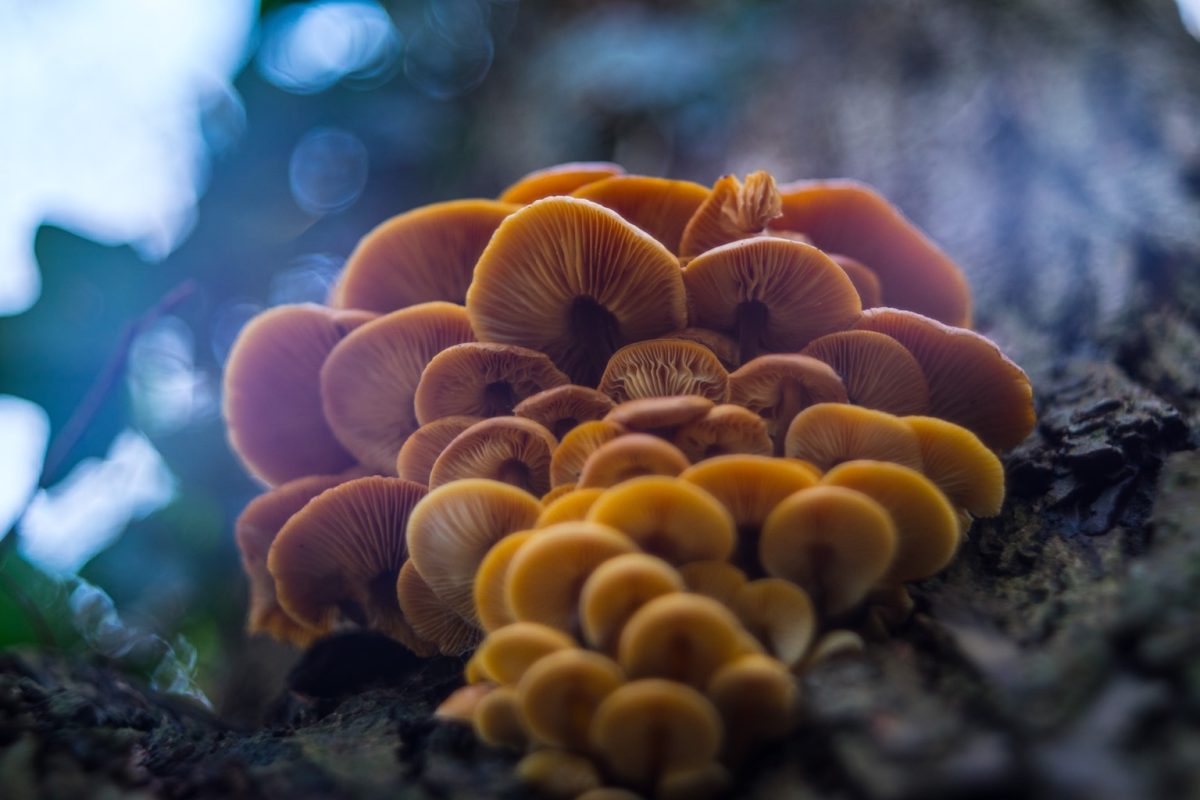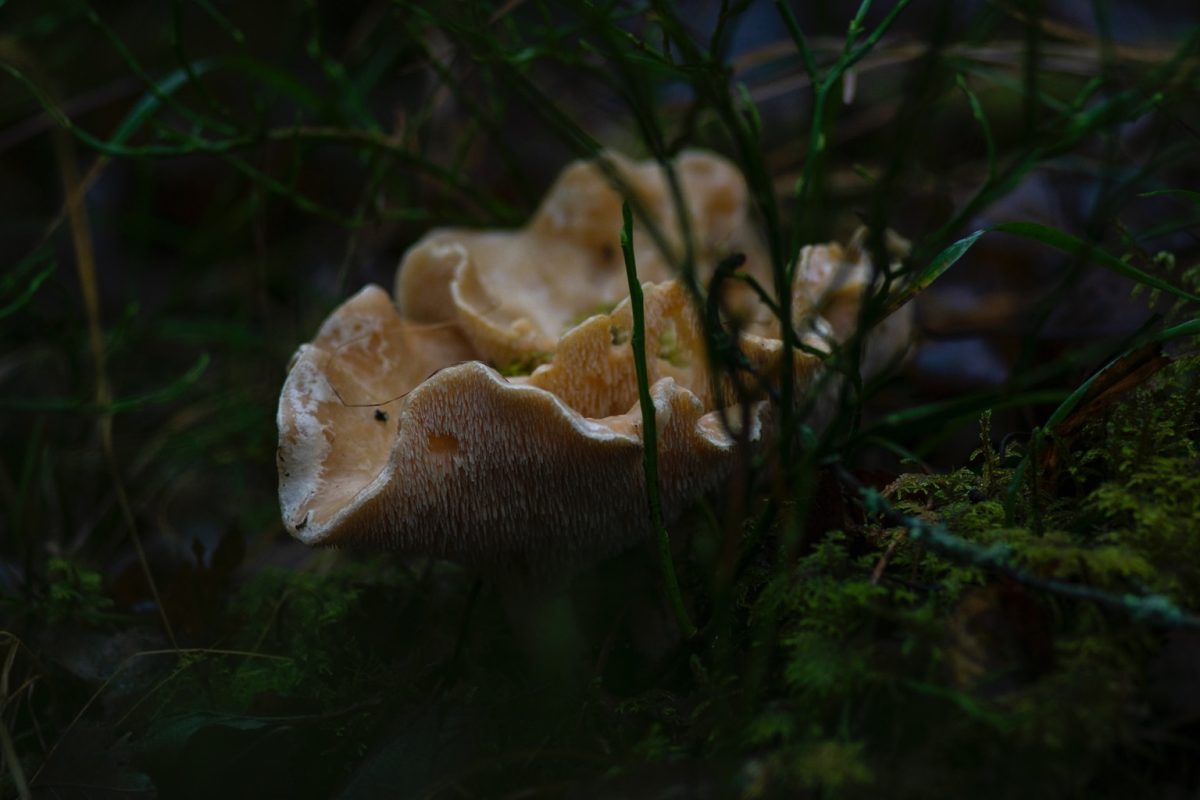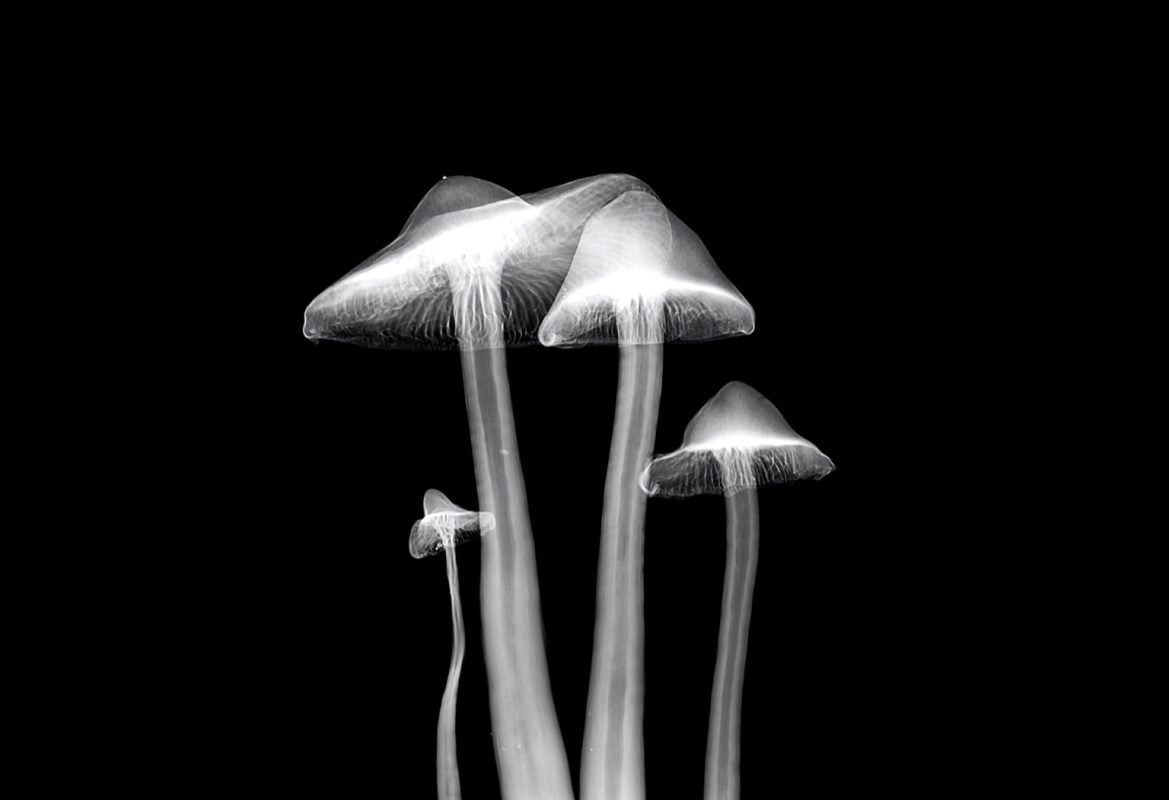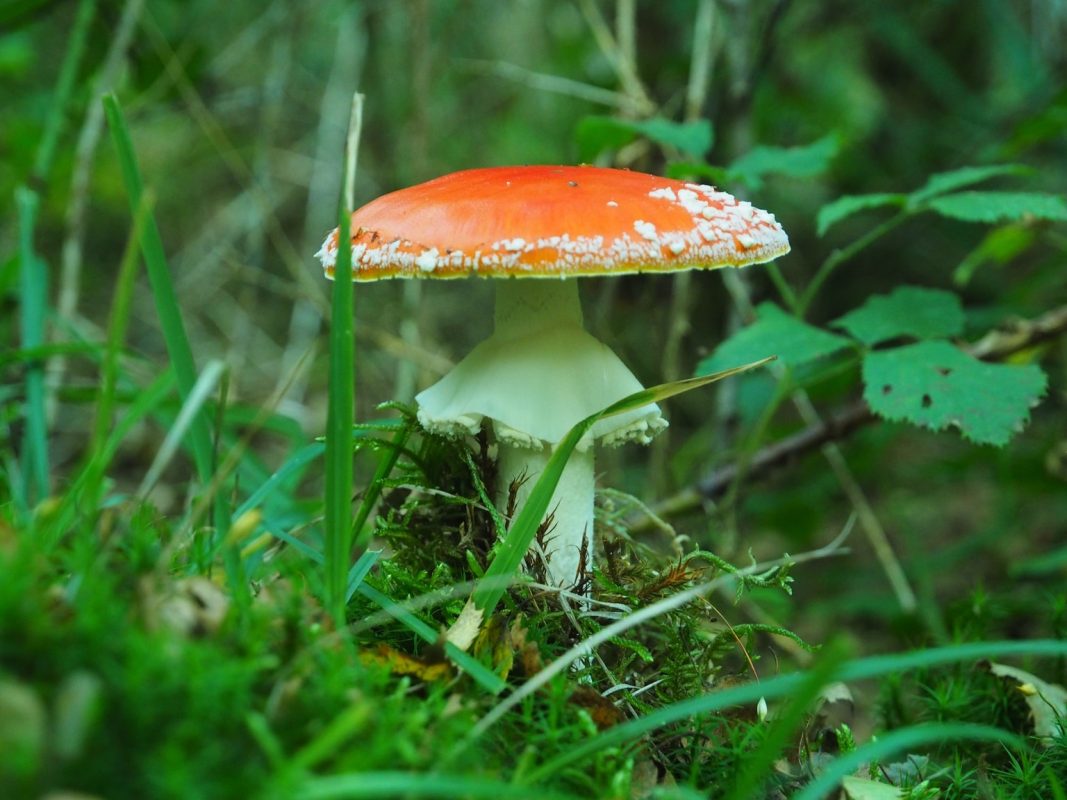Picture this: your morning ritual upgraded with an eco-friendly twist, where coffee chaff, yes, that crunchy, overlooked byproduct of your favorite brew, morphs into the secret sauce (or substrate) for cultivating gourmet mushrooms. Welcome to the fascinating, sustainable, and downright quirky world of using coffee chaff as mushroom substrate. If you’re a Gen-Z or millennial connoisseur of mushroom coffee looking to blend innovation with eco-conscious farming, you’re about to dive into an adventure that fuses science, sustainability, and a pinch of rebellious creativity.
Quick Links to Useful Sections
- Unpacking the Buzz: What Is Coffee Chaff and How Does It Relate to Mushrooms?
- The Science Behind the Magic: Coffee Chaff’s Nutritional Profile
- Why Choose Coffee Chaff for Mushroom Cultivation?
- Getting Down to Business: Preparing Coffee Chaff as Mushroom Substrate
- Step 1: Source & Sterilize Your Coffee Chaff
- Step 2: Mix with Complementary Ingredients
- Step 3: Hydration is Key
- Step 4: Inoculation Time
- Step 5: Incubate and Monitor
- From Substrate to Superfoods: The Fruiting Process
- Environmental Adjustments for Fruiting
- Monitoring Growth and Harvesting
- Mushroom Varieties That Thrive on Coffee Chaff
- Oyster Mushrooms (Pleurotus ostreatus)
- Shiitake Mushrooms (Lentinula edodes)
- Button Mushrooms (Agaricus bisporus)
- Sustainability and Beyond: The Eco-Friendly Impact of Using Coffee Chaff
- Diving Deeper: The Microbial Alchemy of Coffee Chaff and Mycelium
- Common Challenges and Troubleshooting Tips
- Contamination Concerns
- Moisture Management Mishaps
- Temperature and Humidity Fluctuations
- Bridging the Gap: From Hobby to Sustainable Business
- Case Studies: Trailblazers in Coffee Chaff Mushroom Cultivation
- The Urban Farm Revolution
- Sustainable Startups: Brewing Innovation
- Backyard Science: DIY Experimentation
- Resources and Community Support: Your Next Steps
- Building Your Personalized Coffee Chaff Mushroom Cultivation Plan
- Step 1: Assess Your Resources
- Step 2: Set Clear Objectives
- Step 3: Integrate Techniques
- Step 4: Pencil in a Routine
- Step 5: Learn, Adjust, and Scale
- Innovative Trends: Merging Mushroom Coffee With Upcycled Cultivation
- Merging Traditional Wisdom and Modern Innovation
- Integrative Approaches for the Eco-Minded: Coffee, Chaff, and Community
- Mushroom Cultivation Myths Debunked
- Myth 1: Coffee Chaff Is Too ‘Niche’ To Be Effective
- Myth 2: Only Professional Growers Can Handle the Process
- Myth 3: It’s Just a Fad for the Eco-Enthusiast
- Integrative and Holistic Approaches FAQs: Your Questions Answered
- Your Journey Towards a Greener, Fungal Future
Unpacking the Buzz: What Is Coffee Chaff and How Does It Relate to Mushrooms?
Let’s break it down. When coffee beans are roasted to perfection, they shed a thin layer of skin known as coffee chaff. Typically discarded as waste, this byproduct is packed with organic compounds, making it a nutrient-dense material with surprising potential. Enter mushrooms: nature’s incredible recyclers. These fungi can convert coffee chaff into a thriving medium that supports their growth, a process that’s as eco-friendly as it is ingenious.
In the realm of sustainable urban farming, coffee chaff is emerging as a superstar substrate choice for cultivating mushrooms. It not only recycles what would have been waste but also complements the natural life cycle of mushrooms by providing the nutrients and structure required for their development. This synergy between coffee and mushrooms isn’t just a neat trick; it’s a win-win scenario that fuels innovative agricultural practices and offers a sustainable solution to food production in urban settings.
Whether you're an environmental activist, a budding mycologist, or simply a coffee lover with an eye for eco-innovation, the idea of converting everyday coffee remnants into a fertile growing medium for mushrooms is bound to spark your curiosity, and maybe even your next DIY project.
The Science Behind the Magic: Coffee Chaff’s Nutritional Profile
You might be wondering what makes coffee chaff so special. Like a plot twist in your favorite series, the nutrient profile of coffee chaff is nothing short of impressive. Rich in carbon compounds, this byproduct offers the perfect balance of cellulose, lignin, and trace nutrients that serve as the building blocks for mycelial growth. Think of it as providing a gourmet, organic buffet for mushrooms.
Looking For The Best Mushroom Coffee? You'll Love These:
Coffee chaff contains a notable amount of nitrogen, a key player in protein synthesis, which is essential for mushroom development. It’s also brimming with antioxidants and polyphenols, compounds that, when repurposed responsibly, increase the substrate’s overall fertility. The porous nature of coffee chaff allows excellent air exchange and moisture retention, both crucial for the thriving life of mycelium.
Research into alternative mushroom substrates has shown that coffee chaff not only supports healthy mycelial colonization but can also speed up growth rates and yield better quality mushrooms. This naturally occurring synergy transforms a byproduct that would otherwise contribute to waste into an invaluable resource for eco-conscious cultivators.
Why Choose Coffee Chaff for Mushroom Cultivation?
You might ask, “Why opt for coffee chaff over more conventional substrates like straw or sawdust?” The answer lies in its unique blend of sustainability, cost-effectiveness, and adaptability. Here’s why coffee chaff is worth your experimental and entrepreneurial energy:
- Sustainability: Coffee chaff repurposes brewing waste, reducing environmental footprint and promoting circular economy practices. It’s the epitome of upcycling.
- Availability: With the global consumption of coffee skyrocketing, coffee shops and roasters produce tons of chaff daily, providing a continuous, low-cost supply for small-scale and industrial mushroom growers alike.
- Nutrient Density: Its balanced nutrient profile creates an ideal environment for mycelial growth, ensuring robust mushroom development and higher yields.
- Versatility: Whether you're a backyard grower or a commercial cultivator, coffee chaff adapts to various mushroom species, from oyster mushrooms to shiitakes, making it a versatile choice.
- Urban Farming Friendly: In the hustle and bustle of city living, the ability to turn local waste into a productive resource is not just innovative, it’s revolutionary!
With each cup of coffee you sip, remember that the remnants of your brew could spark a new wave of sustainable agriculture, one mushroom cap at a time.
Getting Down to Business: Preparing Coffee Chaff as Mushroom Substrate
Ready to roll up your sleeves and experiment with coffee chaff in your next mushroom cultivation project? Here’s a step-by-step guide to prepare coffee chaff into a potent substrate:
Step 1: Source & Sterilize Your Coffee Chaff
First things first: get your hands on some high-quality coffee chaff, usually available from local coffee roasters or cafes. Once you have it, the next step is to sterilize the chaff to eliminate any unwanted organisms that might compete with your mushroom mycelium. This can be achieved by heating the chaff in an autoclave or pressure cooker at 121°C for 30–45 minutes, or by using pasteurization techniques if you’re working on a smaller scale.
Step 2: Mix with Complementary Ingredients
While coffee chaff is a stellar substrate on its own, combining it with other organic matter can optimize its nutrient content and structure. Consider mixing in materials like sawdust, straw, or even spent coffee grounds for a richer texture and a broader nutrient profile. This blend not only enhances the substrate but also mimics the natural decomposition processes found in forest floors.
Pro tip: Experiment with different ratios to see what works best for the mushroom species you’re cultivating.
Step 3: Hydration is Key
Next up, moisture management. The ideal moisture content for your substrate is around 60–65%. To achieve this, soak your coffee chaff mix in water, then drain excess liquid until the substrate feels damp but not soggy. Perfect hydration creates an optimal environment for the development of mycelium.
Step 4: Inoculation Time
Once your substrate is prepped, it’s time to introduce the star of the show: the mushroom spawn. Whether using grain spawn or liquid culture, ensure even distribution throughout your coffee chaff substrate. Rigorously mix it in a sterile environment to avoid contamination.
This step is crucial. The success of your mushroom cultivation largely depends on the quality and speed of mycelial colonization within this customized medium.
Step 5: Incubate and Monitor
Place your inoculated substrate into breathable bags or containers. The incubation stage requires a warm, dark, and humid environment, typically between 24–27°C. In the coming days or weeks, monitor the growth carefully, ensuring that the mycelium spreads uniformly. Keep an eye out for contaminants and adjust environmental conditions as needed.
Patience is essential at this stage. With the right conditions, you’ll soon witness a white, fluffy network spreading through your substrate, a sign that it’s time to transition to the fruiting stage.
From Substrate to Superfoods: The Fruiting Process
Now that your mycelium has colonized the coffee chaff substrate, it’s time to trigger the fruiting stage, where those little mushrooms start to pop up and steal the show. Transitioning from incubation to fruiting involves shifting environmental conditions: increasing light exposure, regulating humidity, and adjusting temperature.
Environmental Adjustments for Fruiting
Unlike the dark, humid incubator phase, fruiting requires more dynamic conditions. Provide indirect light to mimic natural daylight, maintain a high humidity level (around 85–95%), and slightly lower the temperature (ideally around 18–21°C). These changes simulate the natural shift that occurs when mushrooms emerge in the wild.
It might sound a bit technical, but think of it as setting the stage for a performance, the mushrooms are the actors, the substrate is the backdrop, and the environment is the director making sure the show goes on flawlessly.
Monitoring Growth and Harvesting
Once your mushrooms begin to fruit, keep a close eye on their development. Depending on the species, mushrooms can emerge in as little as a few days to a couple of weeks. Harvest them at the peak of their freshness for the best flavor and nutrient content. Remember, over-mature mushrooms can lead to spore release and a decline in quality.
Cultivating mushrooms on coffee chaff substrate offers an exciting, sustainable alternative to conventional growing methods. It’s not just about creating a superfood for your morning brew; it’s about embracing a circular, organic system where the byproducts of our favorite daily pick-me-up fuel nature’s magic.
Mushroom Varieties That Thrive on Coffee Chaff
Not all mushrooms are created equal when it comes to thriving on coffee chaff. Some species are particularly well-suited to this unique substrate, offering both culinary delight and nutritional benefits. Let’s explore a few popular choices:
Oyster Mushrooms (Pleurotus ostreatus)
Oyster mushrooms are the rockstars of substrate-based mushroom cultivation. Their aggressive mycelial growth allows them to easily colonize coffee chaff, proving that humble coffee leftovers can produce gourmet results. Well-known for their tender texture and mild, slightly sweet flavor, oyster mushrooms are a favorite among chefs and home growers alike.
Shiitake Mushrooms (Lentinula edodes)
Shiitake mushrooms are celebrated for their rich umami flavor and impressive health benefits. While traditionally grown on hardwood logs or sawdust, shiitakes can also adapt to a coffee chaff substrate. With the right balance of moisture and nutrients, these mushrooms develop a robust character that elevates any culinary creation.
Button Mushrooms (Agaricus bisporus)
Button mushrooms, commonly seen in grocery stores, are incredibly versatile and popular. Their relatively rapid growth cycle makes them an attractive candidate for experiments with coffee chaff substrate. With proper care, button mushrooms can yield profusely, delivering a delightful crunch and delicate flavor that pairs well with a myriad of dishes.
Experimenting with these varieties can lead to fascinating insights and tasty results. The fun is in mixing and matching your favorite species, and perhaps even discovering a new gem along the way.
Sustainability and Beyond: The Eco-Friendly Impact of Using Coffee Chaff
In today’s eco-conscious era, sustainability isn’t just a buzzword, it’s a lifestyle. By repurposing coffee chaff as a mushroom substrate, you’re not only embracing innovation but also playing your part in reducing food waste and minimizing environmental impact. Every time you recycle this coffee byproduct, you contribute to a cleaner, greener planet.
Coffee chaff is often thrown away without a second thought, yet it holds immense potential when given a second life. Transforming coffee chaff into a medium for growing mushrooms supports sustainable agriculture by:
- Reducing Waste: Instead of contributing to landfill mass, coffee chaff becomes an active, living component of your mushroom farm.
- Cutting Costs: With ample availability and low cost, coffee chaff provides a budget-friendly substrate option for both hobbyists and commercial growers.
- Supporting Urban Farming: In urban environments where space is limited, utilizing local waste streams like coffee chaff can bolster community farming initiatives and encourage self-sufficiency.
- Promoting a Circular Economy: By turning waste into wealth, you’re at the forefront of a movement that values resource efficiency and innovation.
The environmental benefits extend far beyond your growing operation. Embracing a circular system where waste is repurposed can inspire communities, change consumer habits, and contribute to a healthier planet.
Diving Deeper: The Microbial Alchemy of Coffee Chaff and Mycelium
At the heart of using coffee chaff as a mushroom substrate is an intricate biological dance between microbes and mycelium. When coffee chaff is combined with water and other organic materials, it creates a dynamic ecosystem where bacteria, yeast, and fungi interact in surprising and beneficial ways.
Mycelium, the root-like network of mushrooms, harnesses this microbial alchemy to break down complex compounds into simpler, absorbable nutrients. This process not only enriches the substrate but also breaks down potential toxins and creates a fertile environment for growth, like nature’s own composting system, only cooler.
Understanding this microscopic world can elevate your appreciation of the entire process. It’s a reminder that even the smallest organisms play a monumental role in recycling nutrients, supporting plant life, and sustaining the balance of our ecosystems.
Common Challenges and Troubleshooting Tips
Every adventurous journey comes with its hurdles, and mushroom cultivation is no different. Here are some common challenges you might face when using coffee chaff as a substrate, and how to overcome them with confidence and a dash of creativity:
Contamination Concerns
One of the biggest hurdles in any mushroom cultivation process is contamination. Unwanted bacteria or mold can easily hijack your substrate if you’re not careful. To combat this, always work in a clean, sanitized space and consider using a HEPA-filtered glove box for inoculation. Regularly monitor your substrate for any signs of mold or off-color growth, and don’t be afraid to discard compromised batches to save the rest of your crop.
Moisture Management Mishaps
Both under-watering and over-watering can throw a wrench in your mushroom-growing operation. Coffee chaff’s porous nature means it holds moisture well, but too much water can lead to anaerobic conditions and the growth of undesirable bacteria. Keep a close eye on your substrate’s dampness, and adjust your hydration practices accordingly.
Temperature and Humidity Fluctuations
Mushrooms can be finicky about their environment. Sudden fluctuations in temperature and humidity can stress your mycelium, delaying colonization or reducing fruiting yields. Invest in a reliable thermometer and hygrometer, and try to maintain steady, ideal conditions both during incubation and fruiting.
Troubleshooting these challenges is part of the fun, think of it as fine-tuning a recipe. With careful observation and timely adjustments, you can navigate any hurdles and keep your mushroom project on track.
Bridging the Gap: From Hobby to Sustainable Business
For all the DIY aficionados out there, using coffee chaff as a mushroom substrate isn’t just a weekend experiment, it has the potential to evolve into a full-fledged sustainable business model. Urban farming enthusiasts and eco-entrepreneurs are turning their passion for sustainability into profitable ventures, tapping into the global demand for organic, locally grown produce.
Whether you’re planning to supply local restaurants, sell at farmers markets, or even launch your own mushroom coffee brand, the low-cost, high-reward nature of coffee chaff substrate makes it an attractive option for commercial cultivation. Imagine branding your mushrooms as “eco-chic” and “upcycled”, it’s a compelling narrative that resonates with a generation that values sustainability, innovation, and authenticity.
With proper planning, marketing savvy, and a commitment to quality, your humble coffee chaff experiment can blossom into a thriving business that not only yields delicious mushrooms but also inspires environmental change.
Case Studies: Trailblazers in Coffee Chaff Mushroom Cultivation
Real-world success stories provide the ultimate proof that using coffee chaff as a substrate is more than just a neat novelty, it’s a practical, innovative solution that’s already making waves.
The Urban Farm Revolution
In bustling metropolitan hubs, forward-thinking urban farmers are repurposing locally sourced coffee chaff into profitable mushroom farms. One Brooklyn-based micro-farm has tapped into the local coffee culture by partnering with nearby cafes to source chaff. Their blend of coffee chaff and organic wheat straw yielded a bountiful crop of oyster mushrooms, which quickly became the talk of the town. Their sustainable model has not only reduced waste but also garnered media attention and community support, setting a new trend in urban farming.
Sustainable Startups: Brewing Innovation
In the Pacific Northwest, a startup coined “Mushroom Mojo” reinvented the way mushroom coffee is produced by integrating coffee chaff into their growth process. Their hyper-local approach stitches together traceable sourcing, ethical production practices, and premium taste, all while reducing their carbon footprint. Their innovative process has catapulted them into the spotlight of eco-conscious consumers and sustainability influencers alike.
Backyard Science: DIY Experimentation
Even intrepid hobbyists are finding success with coffee chaff substrate. A group of college friends, passionate about sustainability and culinary experiments, transformed leftover coffee chaff from their campus café into a series of homegrown shiitake mushrooms. Their DIY project went viral on social media, inspiring a wave of experimental urban gardening endeavors. Their journey underscores that innovation doesn’t require a big budget, just creativity and a willingness to experiment.
These case studies showcase a spectrum of possibilities, proving that whether you’re a serious entrepreneur or a weekend experimenter, coffee chaff as mushroom substrate can redefine what it means to craft food sustainably.
Resources and Community Support: Your Next Steps
Ready to jump into the world of coffee chaff mushroom cultivation? You’re not alone on this sustainable journey. A vibrant community of urban farmers, DIY enthusiasts, and eco-innovators is buzzing with resources, tutorials, and support groups, all eager to share tips, troubleshoot challenges, and celebrate successes.
To get started, explore online forums, local farming cooperatives, and social media groups dedicated to organic mushroom cultivation and sustainable urban agriculture. Look for workshops, webinars, and farm tours that showcase innovative approaches to upcycling coffee chaff and other unusual substrates. These resources can offer practical advice, inspirational stories, and even opportunities to collaborate with like-minded individuals.
Whether you’re just curious about trying a simple home project or planning a full-scale urban farming venture, tapping into this community can provide valuable insights and lasting connections. The sustainable food movement is on the rise, and your involvement can help shape a greener, more resourceful future.
Building Your Personalized Coffee Chaff Mushroom Cultivation Plan
Much like crafting the perfect cup of coffee, a successful mushroom cultivation plan using coffee chaff requires thoughtful preparation and a blend of the right ingredients. Here’s how to build a plan that suits your goals, whether they’re experimental or entrepreneurial:
Step 1: Assess Your Resources
Begin by taking inventory of your available resources. Are you sourcing coffee chaff locally? Do you have access to additional organic materials like straw, sawdust, or spent coffee grounds? Evaluate your budget, space, and equipment, everything from sterilization tools to humidity controllers.
Step 2: Set Clear Objectives
Define what success looks like. Are you aiming for a small, personal harvest or a scalable business model? Establish goals such as yield targets, growth timelines, and environmental metrics like waste reduction or energy efficiency.
Step 3: Integrate Techniques
Blend proven cultivation techniques with creative experimentation. Use the step-by-step processes for substrate preparation, inoculation, and fruiting outlined earlier, while staying open to adjustments based on your chosen mushroom species and local climate conditions.
Step 4: Pencil in a Routine
Consistency is key in cultivation. Develop a daily or weekly routine that includes monitoring substrate moisture, temperature, and contamination risks. Use digital tools and checklists to track progress and adjust your methods as needed.
Step 5: Learn, Adjust, and Scale
Treat your cultivation project as a living experiment. Document your successes and setbacks, learn from each batch, and continuously refine your techniques. The more data you gather, the better you can tweak your process for scaling up and maximizing yield.
With a personalized plan, you’re not just growing mushrooms, you’re cultivating a passion for sustainability, innovation, and self-reliance. Each step forward is a step toward a more environmentally conscious future.
Innovative Trends: Merging Mushroom Coffee With Upcycled Cultivation
In today’s world of artisanal beverages and functional foods, mushroom coffee has carved out a unique niche. Blending traditional coffee with medicinal mushrooms like lion’s mane, reishi, and cordyceps not only creates a flavorful beverage but also offers cognitive and health benefits. Now, imagine taking it one step further by incorporating coffee chaff substrate into the production cycle.
This innovative loop, where the byproduct of coffee production fuels the growth of mushrooms that eventually enhance your coffee, captures the essence of a closed-loop, zero-waste system. A growing number of startups and coffee roasters are exploring these synergies, crafting products that are as delightful to the palate as they are beneficial to the environment.
For those with a taste for disruption and sustainability, this emerging trend represents the intersection of culinary artistry and ecological responsibility. It’s more than a fad; it’s an invitation to reimagine what’s possible when we align consumption with conservation.
Merging Traditional Wisdom and Modern Innovation
The idea of using coffee chaff as mushroom substrate isn’t merely a product of modern sustainability trends, it has roots in traditional practices of organic farming and natural recycling. Many indigenous cultures have long appreciated the importance of utilizing waste to fertilize the soil, improve plant growth, and create a balanced ecosystem.
Today’s urban cultivators are channeling that time-tested wisdom through modern scientific practices, marrying the old with the new. The result is an innovative, holistic system where every element of the process respects the environment while delivering superb quality and taste. This blend of tradition and innovation is not only inspiring, it’s revolutionizing agriculture one cup of coffee and one cluster of mushrooms at a time.
Integrative Approaches for the Eco-Minded: Coffee, Chaff, and Community
Let’s be real: in a world that’s increasingly complex and fast-paced, community matters. Whether you’re just starting out, fumbling with your first inoculation, or managing a multi-acre urban farm, sharing experiences and knowledge is the key to success. Online communities, local meetups, and sustainable food cooperatives are brimming with resources and support.
Engage with platforms like urban farming forums, social media groups devoted to mycology, and even local workshops where experts share hands-on tips. Not only do these spaces provide inspiration, but they also serve as a safety net for troubleshooting and creative problem-solving. Being part of a vibrant eco-community reinforces the idea that sustainability isn’t a solitary endeavor, it’s a shared mission.
Embrace the opportunity to collaborate, learn, and celebrate every small victory along your cultivation journey. After all, every successful mushroom harvest nurtures not just the environment but also the spirit of community and innovation.
Mushroom Cultivation Myths Debunked
As with any emerging trend, myths and misconceptions abound. Let’s debunk a few common ones surrounding the use of coffee chaff as mushroom substrate:
Myth 1: Coffee Chaff Is Too ‘Niche’ To Be Effective
Far from it! Science and real-world experiments have shown that coffee chaff offers a robust nutrient profile that supports vigorous mycelial growth. Its unique composition makes it an exceptional substrate when properly prepared.
Myth 2: Only Professional Growers Can Handle the Process
While expertise helps, the beauty of using coffee chaff lies in its simplicity and accessibility. With readily available resources and a supportive community, even beginners can achieve impressive results.
Myth 3: It’s Just a Fad for the Eco-Enthusiast
Sustainability isn’t a transient trend; it’s a necessary adaptation for our future. Upcycling coffee chaff into a useful cultivation medium represents a shift towards a circular economy, a principle that stands the test of time.
Dispelling these myths not only demystifies the process but also paves the way for more widespread adoption and innovation in mushroom cultivation.
Integrative and Holistic Approaches FAQs: Your Questions Answered
Here are some frequently asked questions that dive into the nitty-gritty of using coffee chaff as mushroom substrate, directly addressing common queries from curious cultivators:
1. What exactly is coffee chaff, and why is it ideal for mushroom cultivation?
Coffee chaff is the outer skin shed during the roasting process of coffee beans. It is rich in organic compounds such as cellulose and lignin, making it a nutrient-dense, eco-friendly substrate that supports robust mycelial growth.
2. How do I properly sterilize coffee chaff for use as a substrate?
Sterilization is crucial to prevent contamination. You can steam or pressure cook the coffee chaff at 121°C for 30–45 minutes. For smaller projects, pasteurization techniques also work, though maintaining sterility is essential.
3. Can I mix coffee chaff with other substrates?
Absolutely! Combining coffee chaff with materials like straw, sawdust, or spent coffee grounds can enhance the texture and nutrient profile, leading to improved yields.
4. Which mushroom species are best suited for coffee chaff substrate?
Oyster mushrooms, shiitake, and button mushrooms are among the best candidates. Their adaptability to different substrates makes them ideal for experiments with coffee chaff.
5. How do I manage moisture and contamination issues?
Keeping the substrate damp (around 60–65% moisture) without becoming waterlogged is key. Sterilize your materials thoroughly and maintain a clean working environment to prevent contaminants.
6. Can I scale up this method for commercial production?
Yes, many urban farmers and sustainable startups have successfully scaled up using coffee chaff, thanks to its low cost and abundant availability. It’s a flexible option suitable for both small and large operations.
7. What environmental benefits can be expected from using coffee chaff?
Upcycling coffee chaff reduces waste, cuts production costs, and supports sustainable agriculture by closing the loop in the coffee production cycle.
8. Do I need specialized equipment to get started?
While basic cultivation equipment is necessary (sterilization units, humidifiers, temperature controllers), advanced setups are not required for a successful home-grown project.
By harnessing the potential of coffee chaff, you’re engaging in a method of cultivation that’s as revolutionary as it is sustainable!
Your Journey Towards a Greener, Fungal Future
Embracing the potential of coffee chaff as mushroom substrate is more than just a cultivation method, it’s a statement about sustainability, creativity, and the bold spirit of innovation. When you transform what many consider “waste” into a resource that nourishes life, you’re not only crafting delicious mushrooms but also championing an eco-friendly lifestyle that resonates with today’s conscious consumers.
Dive into this journey with an open mind and a readiness to experiment. Whether you’re adding a unique twist to your morning ritual with mushroom coffee or planning to launch a sustainable business that celebrates urban farming, every step you take is an investment in a more resilient and resourceful future.
Each batch of mushrooms grown on coffee chaff is a reminder that sometimes the best ideas come from reimagining the everyday. So, brew your coffee, collect that chaff, set up your cultivation station, and join a growing community of innovators who dare to transform the ordinary into the extraordinary.
Your path to a greener, fungal future starts here. Embrace the unexpected, celebrate your successes, and remember, every little spore matters!
Looking For The Best Mushroom Coffee? You'll Love These:
Useful Interruption: Dive deeper into the world of Mushroom Coffee with our most popular sections. If there is anything you think is missing or anything you would love for us to write about, just give us a shout.
- Mushroom Coffee Equipment & Product Reviews
- Mushroom Coffee Recipes & Creative Variations
- Mushroom Coffee Guides & Troubleshooting
- Mushroom Coffee Brewing & Preparation Techniques
- Model Rocket Advanced Rocketry & Innovations
- Mushroom Coffee Fundamentals
- Model Rocket Equipment Reviews & Digital Tools
- Mushroom Coffee Health Benefits & Wellness
- Mushroom Coffee Mycology & Scientific Insights
- Mushroom Coffee Community, Lifestyle & Engagement
I tried mushroom coffee this morning and told my friend, "This brew is spore-tacular!" He shot back, "Guess that's why it's such a cap-tivating way to kickstart your day!"

